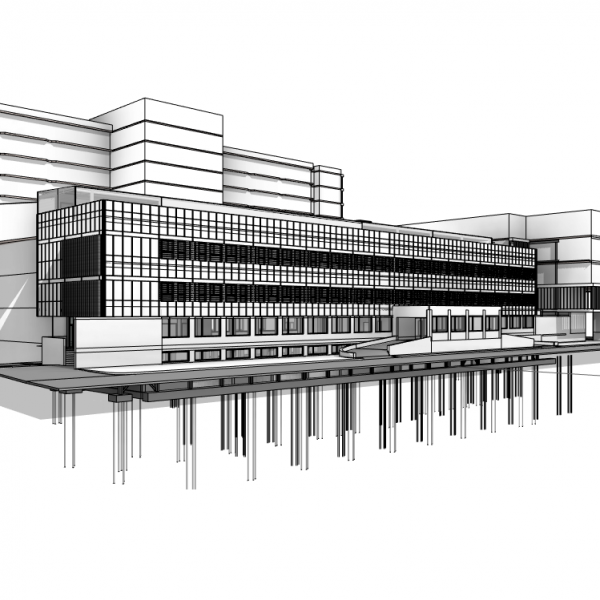

SCRATCH POINT
In 1D dimension we don’t need BIM or 3D models, we need to define what we expect from them and how we need to use digitalization in benefit of the project goals or company / organization business strategy. 1D is the BIM Management and Facility Management 4.0 strategies, we define BIM EIR (exchange information requirements) for companies or BEP (BIM execution plans) for projects based on standards and our great experience in multiple projects.
BIM1D Projects
The world is changing rapidly and demands professionals prepared for great technological challenges, now.
Companies need to define how the want to evolve to the new era of technology. We are experts in to integrate BIM to companies and organizations digital strategy.
There is a wide variety of guidelines and standards that fix usage patterns in BIM technology, it’s important to know the main to allow select the well-known patterns suitable in the BIM project development. To adapt to these patterns brings benefits such us to have documentation and BIM tools enough to take these standards, to collaborate effectively with other teams who will participate in the project and, and after all, to avoid missing into an unknown world of improvisation. Next we mention some of the best-known standards:
- IFC – Industry Foundation Classes – It is a neutral platform, a standard file format and opensource, developed to facilitate interoperability between the increasingly numerous BIM platforms (software), thus allowing to generate federated models for management that bring together the project information from all disciplines involved in the project.
- COBie – Construction Operations Building Information Exchange – Its purpose is to exchange information that is gathered during construction to be passed to Facility Managemet scope. COBie defines the way this information is structured, and the formats that can be used.
- LOD – Level of Development – Is a parameter that defines the information definition level in a BIM element. Is not necessarily the amount of information but it’s the reilability based in specific criteria, and is not directly associated with the geometric development of that BIM element.
- BCF – BIM Collaboration Format – Is an open standard (digital file) to communicate about the ‘issues’ of a BIM model during its design cycle. Is quite practical when sharing live project information between different BIM platforms.
- UNICLASS – Is a unified classification system for all sectors of the UK construction industry. Uniclass allowed project information to be structured to a recognised standard. The original version was later heavily revised to make it compatible with Building information modeling (BIM) processes.
BIM is the opportunity to digitalize not only a project but also to digitalize a AECO company completely. But first we need to understand that BIM is not a model or a group of persons creating 3D models of buildings. BIM is part of digitalization process in where all companies can take profit to create new business. Let us to explain how you can achieve that.
BIM Management should be contracted by final client / property owner to better drive the goals to the more important stage in a project which is the operation and maintenance for building performance. BIM requirements should be defined by experts that will ensure that all stakeholders are creating datasets and BIM models that will be used in benefit of the project.
Exchange Information Requirements define how BIM, digital models and information should be created by all parties involved in the project lifecycle. The protocol is intended for organizations and companies that wants to standardize the use of BIM for multiple purposes and it should be based on standards, but more important is that EIR should guarantee the digitalization goals of the company using BIM.
A BEP is the translation of the EIR (previous topic) to a specific project, it defines the way BIM methodology is performed and defines technical aspects in order to provide professional teams the way to collaborate, the goals and deliverables to achieve among other technical aspects. We recommend BEP to be digital and more than a printed document, we use the concept of “digital BEP” as a ruleset of requirements to automate the auditing tasks of the models against the BEP.
We define a CDE as “A unique virtual place, accessible and operable from the internet, for the management of BIM federated models, the information that BIM generates (graphic and non-graphic), the evolutionary processes of the project, the roles of the agents involved and their communications, in a structured and directional way towards the achievement of the project objectives.”
We recommend using Autodesk BIM360 platform as CDE but there are multiple ones able to collaborate in BIM in a remote / effective / smart and collaborative way.
Automation, big data, facility management, project coordination, implementation of standards, innovation and digitaltwin are just some of the topics in which we are specialized and using BIM as integration to multiple existing systems and technologies will provide a new and more effective way to achieve the goals.


